Umheyhowsitgoing13
New Member
New chameleon owner. I did months of research before getting my chameleon, i read everything i could find, but I'm still very new to this. Renfield is a panther, about 5 months old according to Chameleon Paradise where i got him. I've had him for almost 1 month.
His first week was a struggle, wouldn't eat, wouldn't drink, never pooped. I was also having a hard time keeping the humidity up and finally put plastic on the sides which helped. He finally pooped and there seemed to be something strange in his poop, possibly skin from a previous shed or some paper towel or something (he had no access to paper towels from me) regardless, after finally pooping he began eating and drinking just fine.
His last several poops have been normal. He then went through a shed that seemed to go really smoothly. He did really well for the next couple weeks but has more started acting a bit strange.
It started with him going to bed early. He's started roosting in his favorite plant around 5pm. Lights are on 8am - 8pm. Normally he's crawling around or basking the whole time the lights are on, always sleeping in random spots. Now he goes to bed around 5pm every night. Now, more recently, he stays in bed quite late. It's 2pm right now and he hasn't come out of hiding in his plant yet. Several times I've been worried and gently removed him from his bed to check on him. He was sooooooo angry yesterday when I took him out and just put him on his basking branch. I decided today I would just wait and see if he would come out in his own eventually.
Should I be concerned? He seems fine otherwise. I was going to take him to the vet but thought I'd post here first in case I'm over reacting.
I've got the cage setup as described in the new owners pinned posting:
24x24x48 mesh cage (plastic on sides to retain humidity in my dry house)
Grow lights
ProT 5, 6% UVB (sitting on top of cage. Since it's the 6% that is the right height above basking spot. When he climbs around on the top mesh he's right underneath but he's not usually directly under it for too long)
100W bulb for basking (i have struggled dialing this in. He likes to climb around on the top screen, so I moved the heat lamp up higher so he wouldn't get burned, but now his basking spot is only 83-84 degrees)
-I keep the room he's in at 74 f, hopefully that provides enough temp gradient in the cage.
-I use a laser temp gun
Water glass with dripper. (I've never seen him use the glass but I have seen him licking leaves etc.)
Mister and fogger for humidity (averaging 70%)
-RO water for everything
Live plants, lots of hiding places
Lots of branches for climbing
Feeding mainly roaches with fruit and veggie gut load (I've been feeding him every day, giving him about 5 med sized cockroaches. Some days he'll eat all of them, other days only 1 or 2)
-earth pro A for every feeding
-Reptivite with D3 2x per month
I was also feeding silkworms but they all went gooey and died so I threw them all out.
I rarely handle him.
I'm not sure that my humidity and temp gauges are super accurate.
Photo descriptions:
1. This morning, not happy about the intrusion.
2. Cage setup 1
3. Cage setup 2
4. Lighting view from above
5. Cage setup 3
6. The day i got him
7. Yesterday after i removed him from his bed to check on him. Angry at me all day long.
8. A recent cute picture
His first week was a struggle, wouldn't eat, wouldn't drink, never pooped. I was also having a hard time keeping the humidity up and finally put plastic on the sides which helped. He finally pooped and there seemed to be something strange in his poop, possibly skin from a previous shed or some paper towel or something (he had no access to paper towels from me) regardless, after finally pooping he began eating and drinking just fine.
His last several poops have been normal. He then went through a shed that seemed to go really smoothly. He did really well for the next couple weeks but has more started acting a bit strange.
It started with him going to bed early. He's started roosting in his favorite plant around 5pm. Lights are on 8am - 8pm. Normally he's crawling around or basking the whole time the lights are on, always sleeping in random spots. Now he goes to bed around 5pm every night. Now, more recently, he stays in bed quite late. It's 2pm right now and he hasn't come out of hiding in his plant yet. Several times I've been worried and gently removed him from his bed to check on him. He was sooooooo angry yesterday when I took him out and just put him on his basking branch. I decided today I would just wait and see if he would come out in his own eventually.
Should I be concerned? He seems fine otherwise. I was going to take him to the vet but thought I'd post here first in case I'm over reacting.
I've got the cage setup as described in the new owners pinned posting:
24x24x48 mesh cage (plastic on sides to retain humidity in my dry house)
Grow lights
ProT 5, 6% UVB (sitting on top of cage. Since it's the 6% that is the right height above basking spot. When he climbs around on the top mesh he's right underneath but he's not usually directly under it for too long)
100W bulb for basking (i have struggled dialing this in. He likes to climb around on the top screen, so I moved the heat lamp up higher so he wouldn't get burned, but now his basking spot is only 83-84 degrees)
-I keep the room he's in at 74 f, hopefully that provides enough temp gradient in the cage.
-I use a laser temp gun
Water glass with dripper. (I've never seen him use the glass but I have seen him licking leaves etc.)
Mister and fogger for humidity (averaging 70%)
-RO water for everything
Live plants, lots of hiding places
Lots of branches for climbing
Feeding mainly roaches with fruit and veggie gut load (I've been feeding him every day, giving him about 5 med sized cockroaches. Some days he'll eat all of them, other days only 1 or 2)
-earth pro A for every feeding
-Reptivite with D3 2x per month
I was also feeding silkworms but they all went gooey and died so I threw them all out.
I rarely handle him.
I'm not sure that my humidity and temp gauges are super accurate.
Photo descriptions:
1. This morning, not happy about the intrusion.
2. Cage setup 1
3. Cage setup 2
4. Lighting view from above
5. Cage setup 3
6. The day i got him
7. Yesterday after i removed him from his bed to check on him. Angry at me all day long.
8. A recent cute picture
Attachments
-
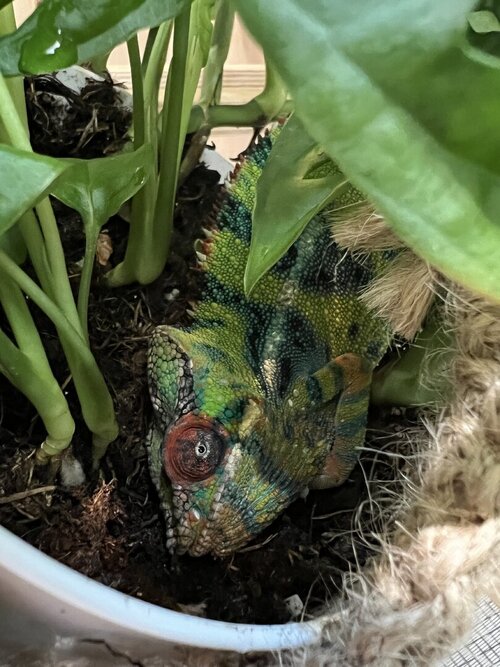 F4E51719-0F94-4336-B02E-79F96223B726.jpeg183.2 KB · Views: 154
F4E51719-0F94-4336-B02E-79F96223B726.jpeg183.2 KB · Views: 154 -
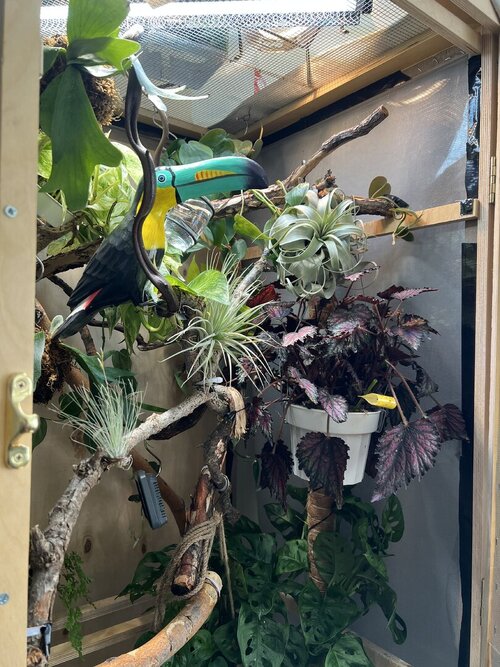 35753A05-0E41-4893-BE25-87FD3423D6BE.jpeg242.4 KB · Views: 122
35753A05-0E41-4893-BE25-87FD3423D6BE.jpeg242.4 KB · Views: 122 -
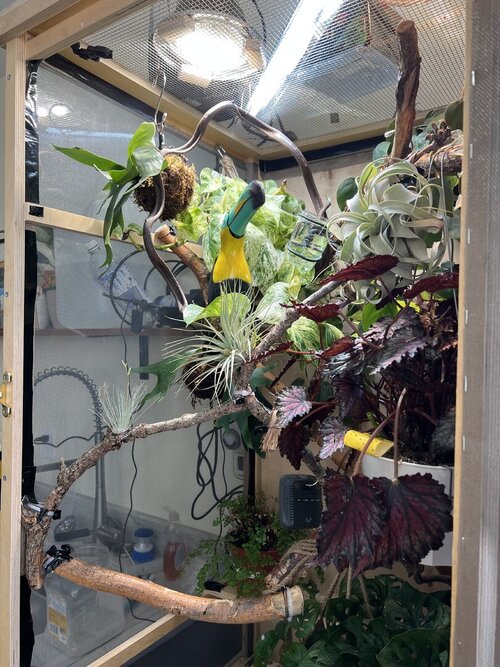 2CA11FB1-9C10-4D67-8859-E998546E0D64.jpeg250.5 KB · Views: 135
2CA11FB1-9C10-4D67-8859-E998546E0D64.jpeg250.5 KB · Views: 135 -
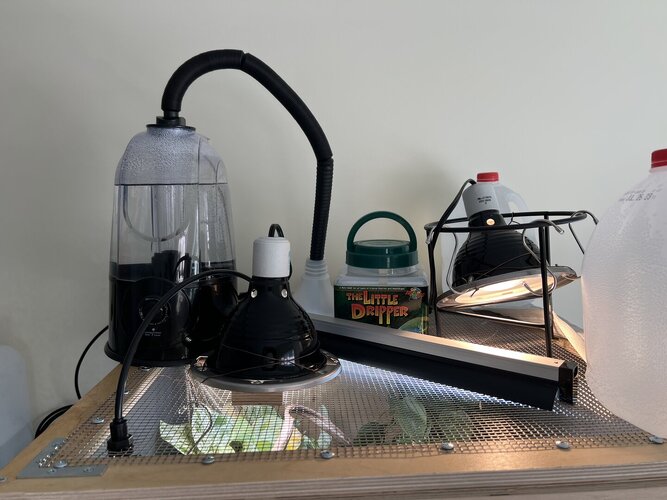 8A4C63BA-2D91-4223-947F-9F735484E780.jpeg219.4 KB · Views: 143
8A4C63BA-2D91-4223-947F-9F735484E780.jpeg219.4 KB · Views: 143 -
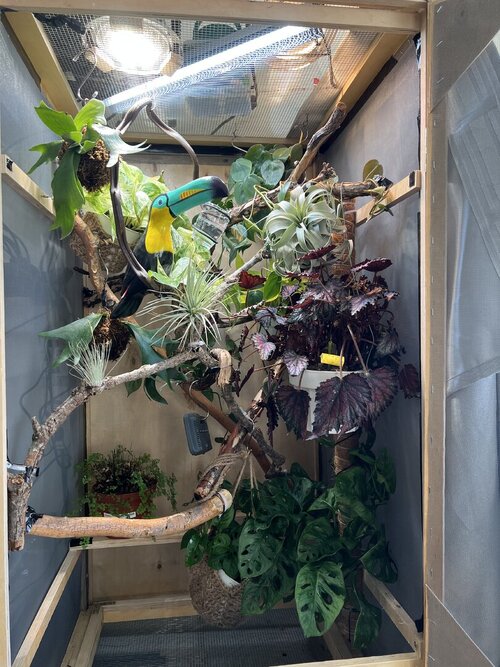 0A2ABADD-0494-4356-8471-8C30D83E8AC9.jpeg235.5 KB · Views: 149
0A2ABADD-0494-4356-8471-8C30D83E8AC9.jpeg235.5 KB · Views: 149 -
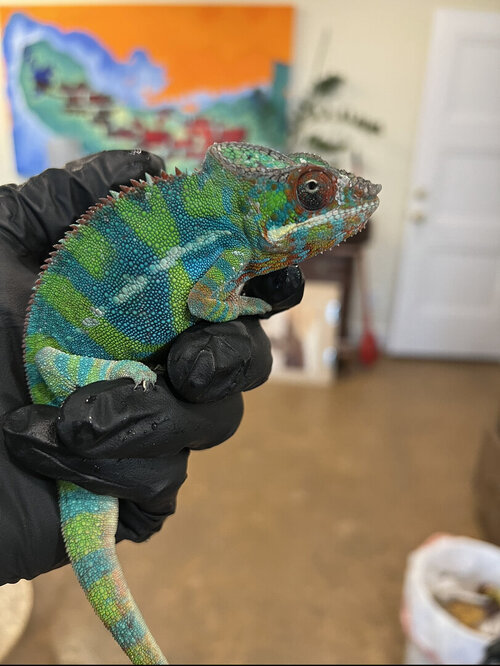 D1650C2E-0F88-41D9-84BD-FF359D03AD40.jpeg168.2 KB · Views: 130
D1650C2E-0F88-41D9-84BD-FF359D03AD40.jpeg168.2 KB · Views: 130 -
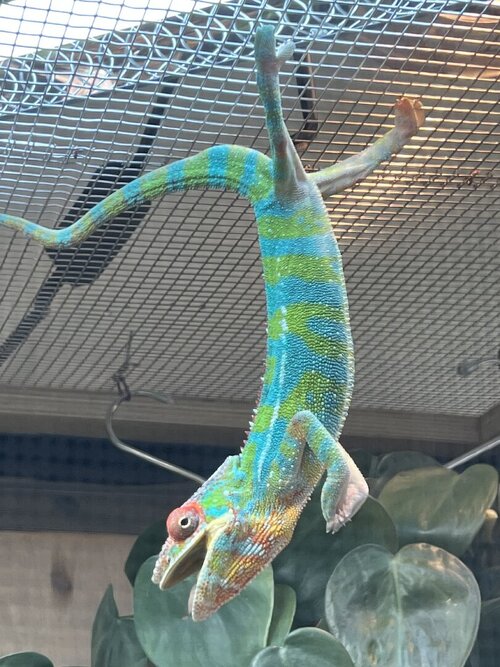 983F07A2-E439-4FF4-9D49-E3C22BD8E980.jpeg209.1 KB · Views: 145
983F07A2-E439-4FF4-9D49-E3C22BD8E980.jpeg209.1 KB · Views: 145 -
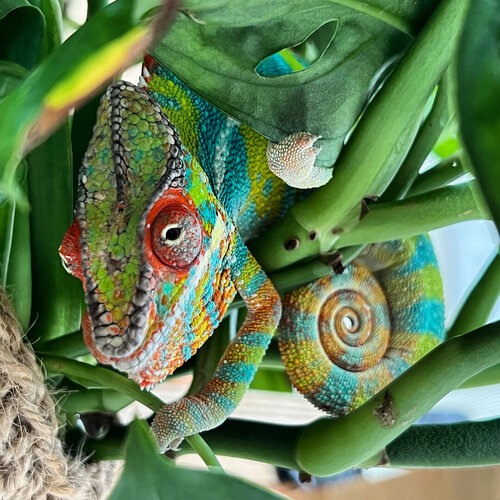 753F882D-2246-4587-A9DC-8ED58557AA4B.jpeg315.2 KB · Views: 149
753F882D-2246-4587-A9DC-8ED58557AA4B.jpeg315.2 KB · Views: 149








